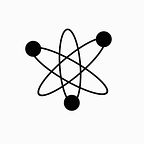Finding the Combustion Products when a Large Number of Inorganic Chemical Compounds are Burnt in Ambient Conditions
The main products of any combustion reaction involving carbon compounds are CO2 and H2O if the combustion is complete. If incomplete there will be a percentage of CO and soot (unburnt carbon plus ash). Depending on the other elements in the compound we will have nitrogen monoxide, nitrogen dioxide, sulfur dioxide, amines, phenyls, cyanides, alkanes, alkenes, monocyclic aromatic hydrocarbons, polycyclic aromatic hydrocarbons, unburnt metals like zinc, aluminum, iron, etc., volatile organic compounds and acids. Often it is quite a task to compute the products of combustion especially if we had over 900 different inorganic compounds that burnt, as was the case with one of Chirality Research Inc.’s projects for which CTECH and Mabile Resources provided valuable data, insights and expertise.
To approach the problem, first, we looked at various combustion software as listed below:
1. CALPUFF:
No-cost, limited-use license
It is an advanced non-steady-state meteorological and air quality modelling system developed by scientists at Exponent, Inc. The model has been listed by the U.S. Environmental Protection Agency (EPA) as an alternative model for assessing long range transport of pollutants and their impacts on Federal Class I areas and for certain near-field applications involving complex meteorological conditions.
However, the software takes the chemicals emitted as inputs and doesn’t calculate them hence, was not suitable for our needs.
2. DWSIM:
Open-source
It is a multiplatform, CAPE-OPEN compliant chemical process simulator for Windows, Linux, Android, macOS, and iOS. It allows practicing engineers to model process plants by using rigorous thermodynamic and unit operations models.
The idea was to add all chemicals to a conversion reactor and simulate the combustion to infer the combustion products. However, we had more than 900 chemicals so this turned out to not be practical.
3. Cantera:
Open-source
Cantera is suite of tools for problems involving chemical kinetics, thermodynamics, and transport processes. Cantera can be used from Python and Matlab, or in applications written in C/C++ and Fortran 90. Cantera is currently used for applications including combustion, detonations, electrochemical energy conversion and storage, fuel cells, batteries, aqueous electrolyte solutions, plasmas, and thin film deposition.
Unfortunately, the in-built library of chemicals whose combustion could be simulated did not contain many of the chemicals we were dealing with.
Since none of the existing software fulfilled our requirement, we adopted our own solution starting from the data we were provided. The workflow of which is shown in Figure 1.
The methodology used is discussed:
· 2 Data sets were provided to us: an inventory list of the products that burnt, and a detailed sheet with each line entry split into rows for the constituent chemicals in the specific products. We did a data validation and visualization process to identify discrepancies as shown in Figure 2. The 2 data sets were first loaded into SQL and a primary key was established, the product id. Thus, 2965 distinct products were identified. The detailed sheet was then pivoted to make sure that the total mass of constituent chemicals tallied with the total mass of the 2965 products (Figure 3.). Where the percentage split of the products into constituent chemicals didn’t add up to 100 percent, the data was normalized so that each product added to 100 percent of constituent chemicals.
The data was visualized in a BI software, Spotfire. This enabled us to identify data discrepancies, the key of which was that we did not have mass balance (Figure 4.). Also looking deeper, the mass of individual atoms that burnt did not tally with the mass of the products that burnt. In this article, the process of analyzing the mass of individual atoms is referred to as Elemental Analysis.
· Since we did not have mass balance, we needed to do a detailed Elemental Analysis exercise. First, we needed to understand the chemical composition of all 2965 products that burnt. We did that by obtaining the CAS numbers of the constituent chemicals from the Safety Data Sheets and data provided by the Client. From the CAS numbers we could get the chemical formula and split the mass of compounds into the constituent mass of atoms of elements like C, H, O, N, S, etc. This was done using python.
· Next, we did a detailed study on the combustion products that went into the air, water and soil with the sampling data provided by CTEH and valuable insights on the compounds burnt by Mabile Resources. More than 50 technical documents were reviewed ranging from tests conducted on soot samples and rainwater collected, to reports published by other agencies.
o The data provided by CTEH was on a web dashboard which was scraped using a python script to create a concise summary table.
o 27 different functional groups were noticed in the products of combustion and they were assigned a representative molecule, eg. polycyclic aromatic hydrocarbons were assigned the molecule naphthalene.
o Emission factors from 3 research papers of the EPA were combined to correctly represent the compounds combusted.
o Calculated assumptions were made where field data was limited, eg., 95% of NOx will be NO, the rest NO2.
· Finally, the mass of the combustion products calculated from emission factors, and the mass of the atoms that burnt calculated from Elemental Analysis, were tallied to conclude the quantities of all products of combustion.
Results:
Our findings of combustion products is listed in Table 1. We were able to calculate the exact mass of each combustion product using Elemental Analysis mass balance.
Conclusion:
Some of the KPIs achieved in the project are listed in Figure 5.
There is a lot of ongoing research in the field of combustion but it is mainly for the combustion of fuels under pressurized conditions. Our problem was unique and complex but we were able to formulate an elegant and simplified solution.
